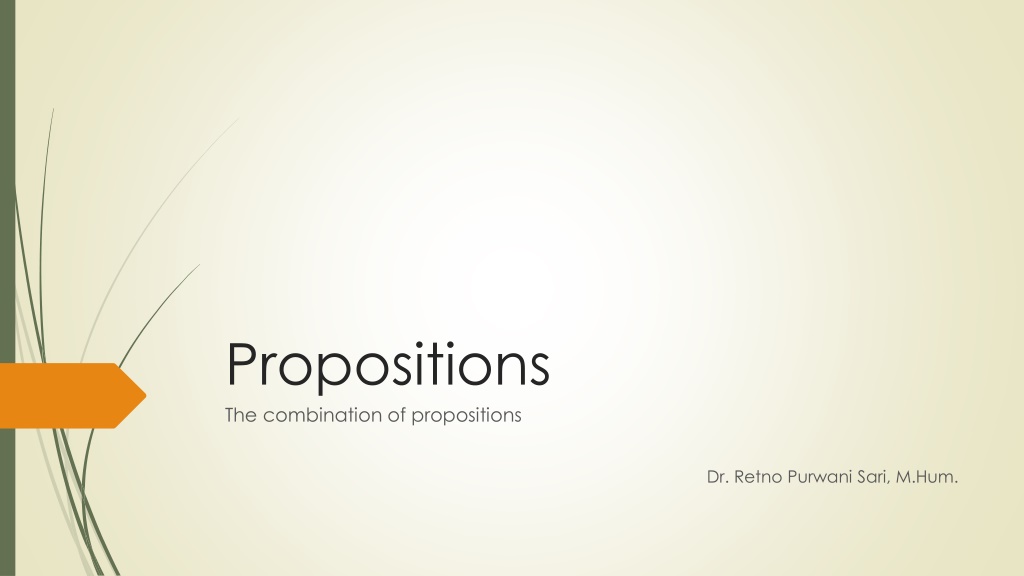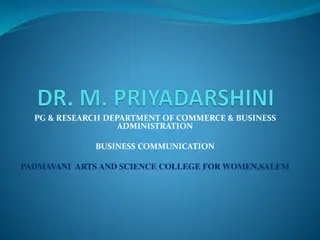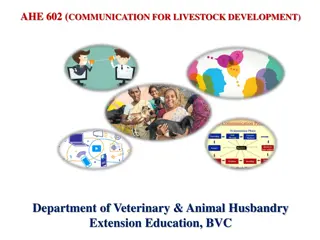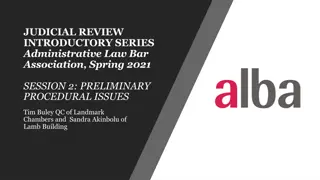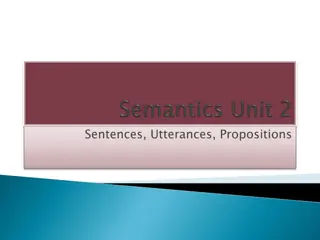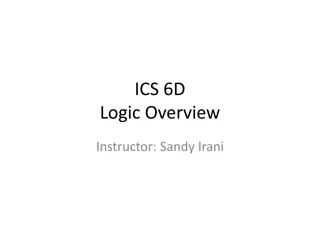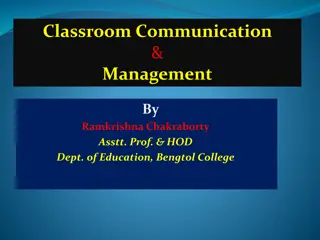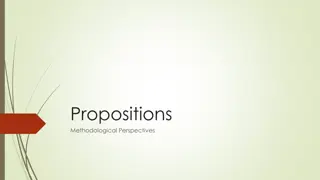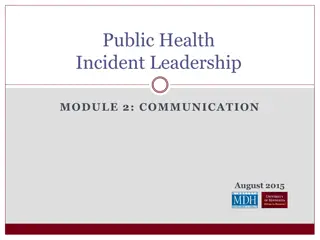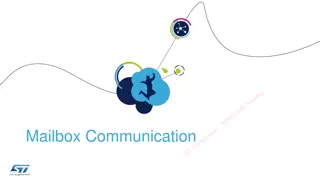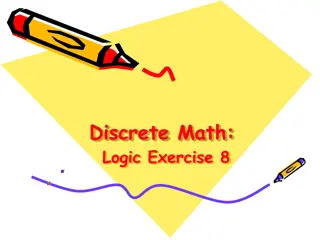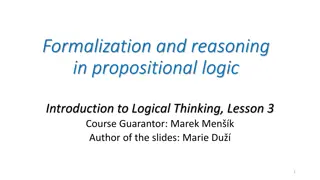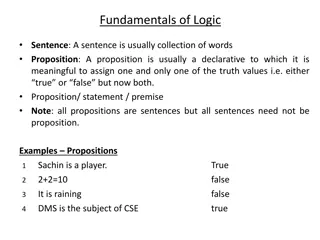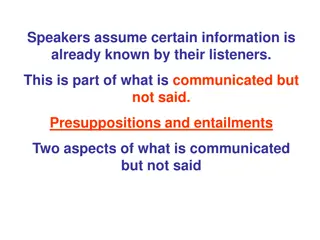Understanding Propositions in Communication: Concepts Explained
Combination of Propositions as explained by Dr. Retno Purwani Sari, M.Hum, involves concepts like THING, EVENTS, ATTRIBUTES, or RELATIONS to form meaningful communication. Propositions take various forms such as clauses or simple sentences, with the method for identifying propositions outlined. Examples illustrate how propositions can be analyzed based on events and participants.
Download Presentation

Please find below an Image/Link to download the presentation.
The content on the website is provided AS IS for your information and personal use only. It may not be sold, licensed, or shared on other websites without obtaining consent from the author. Download presentation by click this link. If you encounter any issues during the download, it is possible that the publisher has removed the file from their server.
E N D
Presentation Transcript
Propositions The combination of propositions Dr. Retno Purwani Sari, M.Hum.
Combination of Proposition consists of concepts (THING, EVENTS, ATTRIBUTES, or RELATIONS) that construct meaningful communication; the combination makes sense. (Larson, 1984:193)
(1) A mouse lived in the country side. (2) A mouse lived in the ocean.*
Proposition most often takes the form of a clause or simple sentences in the grammatical structure but not always. It may be encoded in a variety of forms (Larson, 1984:207)
(3) The mouse found a letter, read, and jumped happily. The mouse found a letter The mouse read a letter The mouse jumped happily (4) The country mouse found a letter, read, and jumped happily. The mouse lived in the countryside The mouse found a letter The mouse read a letter The mouse jumped happily
The method for identifying propositions 1. Look for the form which express EVENT or STATE concepts in the text. Express each of these concepts with a finite verb. 2. Identify the PARTICIPANTS (person or objects which do the action or to which the action is done for EVENT PROPOSITION; TOPIC and COMMENT for STATE PROPOSITION) 3. Rewrite as a proposition with the EVENT or STATE expressed as a finite verb and the PARTICIPANT/TOPIC-COMMENT made explicit, using the form in which there is no mismatch of grammar and semantics in English. That is, the form used for the proposition should indicate by the English structure who the agent is by putting the agent as subject, who or what the effected is by putting it as the object, etc. The relations between the concept are shown by the normal English signals used when there is no mismatching. 4. The relation between the propositions then need to be studied and a rewrite made expressing these relations, reordering the propositions etc.
(5) The men who are now thinking about running for president will campaign soon. Step 1: The EVENTS are think, run, and campaign Step 2: The PARTICIPANTS are men, something, and president Step 3: Some men are now thinking (about something) They want to be president They will campaign soon. Step 4: The order of the events is want, think and then campaign
Identify Propositions by using four steps of the analysis There was once a small brown mouse who lived in a little nest at the edge of a field, deep in the countryside. Life in the countryside was not easy and he had to work hard to find food, but he was perfectly content. He had many good friends, his nest was cozy and comfortable and after a hard day s work, he always slept well and woke refreshed, to the sounds of nature.
